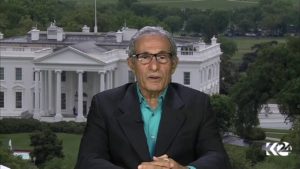 April 18, 2010 – Washington (CNN) – The Pentagon and U.S. Central Command are updating military plans to strike Iran’s nuclear sites, preparing up-to-date options for the president in the event he decides to take such action, an Obama administration official told CNN Sunday.
April 18, 2010 – Washington (CNN) – The Pentagon and U.S. Central Command are updating military plans to strike Iran’s nuclear sites, preparing up-to-date options for the president in the event he decides to take such action, an Obama administration official told CNN Sunday.
The effort has been underway for several weeks and comes as there is growing concern across the administration’s national security team that the president needs fresh options ready for his approval if he were to decide on a military strike, according to the official who is familiar with the effort.
The official did not want to be identified because of the sensitive nature of the work being conducted.
Meanwhile, Iranian President Mahmoud Ahmadinejad continued to amp up his rhetoric against the West on Sunday, claiming that Iran is so powerful today that no country would dare attack it.
“Iran’s army is so mighty today that no enemy can have a foul thought of invading Iran’s territory,” the Iranian leader said in a speech, according to state media.
The Iranian leader has had choice words for Obama and other Western leaders, especially after not receiving an invitation to the nuclear summit hosted in Washington last week. Obama has been pressing the U.N. Security Council to slap Iran with tougher sanctions for its nuclear ambitions. Iran says that its nuclear program is intended for civilian purposes.
In January, Defense Secretary Robert Gates wrote a classified memo to the White House raising concerns about whether the administration had a sufficient policy in place, along with military options, for stopping Iran’s progress in getting a nuclear weapon, the official confirmed.
The memo was first reported Sunday in the New York Times.
Gates spokesman Geoff Morrell declined to confirm the memo, but said in a written statement, “The Secretary believes the President and his national security team have spent an extraordinary amount of time and effort considering and preparing for the full range of contingencies with respect to Iran.”
The planning effort for potential strikes against Iran actually has been underway for some time, the official said.
In December, Adm. Michael Mullen, chairman of the Joint Chiefs of Staff, told his planners he didn’t believe they were taking “seriously enough” the need for fresh thinking about how to attack Iran’s nuclear sites if the
president ordered such a strike, the official said.
“He wanted to create a higher sense of urgency to create military options for the President,” the official said. Mullen “wanted a more robust planning effort to provide the President with options, should he choose a military option,” he said.
The official strongly emphasized that the U.S. military is always updating plans in order to be ready for the president. If Obama were to order a strike against Iran, he would turn to Mullen, Gates and Gen. David Petraeus, the head of Central Command, for their advice on how to proceed. The official would not discuss how any of the updated plans might differ from previously existing military strike options.
Mullen and other Pentagon officials have continuously endorsed diplomacy as the preferred option against Iran. In February Mullen publicly noted that a military strike against Iran’s nuclear program would not be “decisive” and would only delay and set back Iran’s efforts.
Gates recently expressed growing concern about understanding exactly what Iran’s intentions may be.
“How you differentiate, how far have they gone. If their policy is to go to the threshold but not assemble a nuclear weapon, how do you tell that they have not assembled? So it becomes a serious verification question. And I don’t actually know how you would verify that,” Gates said on NBC’s “Meet the Press.”
“So they are continuing to make progress on these programs. It’s going slow – slower than they anticipated, but they are moving in that direction,” he said.
In general, the U.S. military develops what is sometimes called targeting “folders.” These files detail all the known facts and intelligence about a target, include precise location, how deeply buried it might be, the civilian population surrounding the target, the geology of the land and rock around the area, and detailed options about which U.S. weapons might be best used to destroy it.
The U.S. intelligence community is also currently involved in the updated planning effort, providing the latest assessments about Iran’s nuclear progress at various sites around the Islamic republic.
There have been several public hints about the new target planning. Last week, a Pentagon official told the Senate Armed Services Committee in a written statement, “Through prudent military planning we continue to refine options to protect U.S. and partner interests from Iranian aggression, deter Iran’s destabilizing behavior, and prepare for contingencies.”
Back in December, Mullen deliberately, the official said, made a reference to Iran in a public document called “the chairman’s guidance,” posted on the Internet saying, “should the President call for military options, we
must have them ready.”
There have been growing signs of Iranian efforts to militarily protect their nuclear sites. The U.S. Defense Intelligence Agency notes that last year Iran established a separate air defense force, with the stated intention of defending nuclear sites with missiles and air defense radars.
From CNN Pentagon Correspondent Barbara Starr
Source: CNN
















+ There are no comments
Add yours